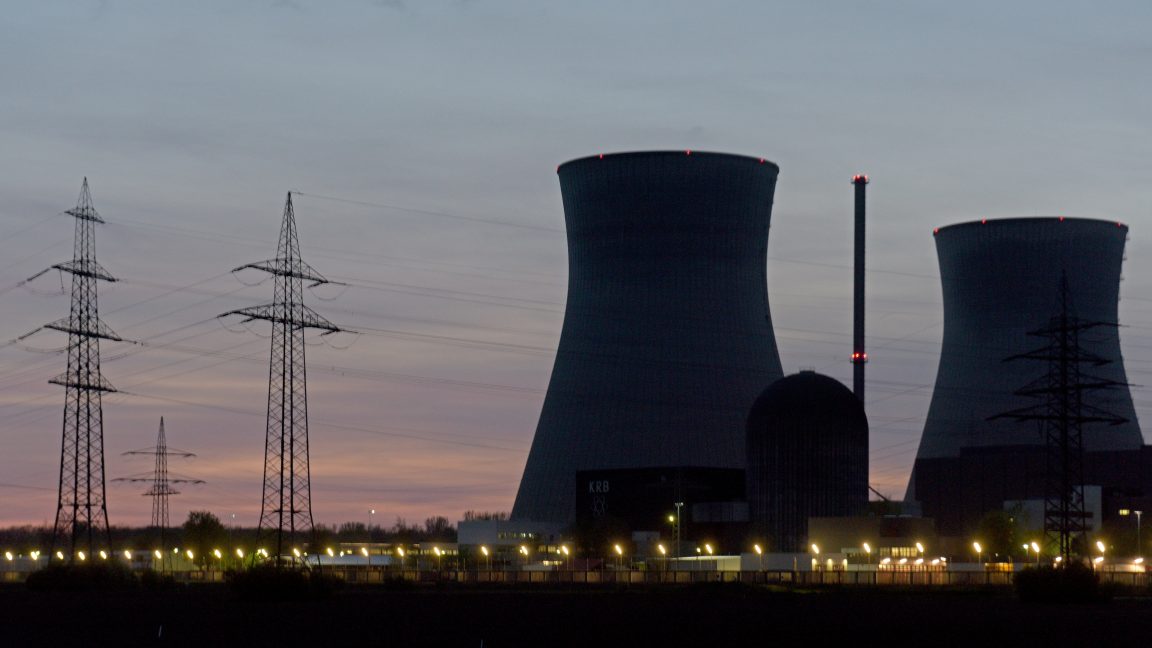Technology
U.S. Government Pushes for Nuclear Energy Revival with New Orders

President Donald Trump has initiated a significant shift in the U.S. energy landscape by signing four executive orders aimed at rejuvenating the nuclear energy sector. These orders, signed in May 2023, focus on streamlining regulations, expediting approval processes, and altering the structure of the Nuclear Regulatory Commission (NRC). The administration views this effort as a pathway to achieving energy independence from foreign suppliers while promoting a “nuclear energy renaissance.”
This renewed interest in nuclear energy stems from a combination of factors, including the need for self-reliance and the growing recognition of nuclear power as a potential solution to combat climate change. Nuclear fission, a process where atoms are split to release energy, does not produce greenhouse gases, making it an attractive option for reducing carbon emissions. The Trump administration aims to boost domestic nuclear energy production to 400 gigawatts by 2050, which would require a significant expansion of the current sector.
Innovative research institutions, such as the Idaho National Laboratory, are at the forefront of developing advanced nuclear technologies, including more efficient fuel types. Additionally, private companies are investing heavily in new reactor designs, marking a shift in an industry that had previously seen limited private sector involvement. For instance, Westinghouse, a major player in the industry, plans to construct ten new large reactors to contribute towards the ambitious 2050 target.
Despite these positive developments, challenges remain. Experts like Allison Macfarlane, a former chair of the NRC and a science and technology policy expert at the University of British Columbia, highlight the prohibitive costs and lengthy construction times associated with nuclear infrastructure. Additionally, there is a division among experts regarding the readiness of new technologies, such as small modular reactors (SMRs), to meet market demands.
According to Edwin Lyman, director of nuclear power safety at the Union of Concerned Scientists, the current discourse surrounding nuclear energy may be overly optimistic. He criticizes the administration’s approach, suggesting that weakening NRC regulations could compromise safety without substantially addressing the core issues of high costs and lengthy development timelines.
The concept of a nuclear renaissance is not new. Similar enthusiasm arose in the early 2000s, fueled by concerns over climate change and fossil fuel depletion. However, interest waned following the catastrophic Fukushima disaster in 2011, which underscored safety vulnerabilities within the industry. Currently, nuclear energy accounts for approximately 9 percent of global electricity generation, down from a peak of 17 percent in 2001. In the U.S., 94 reactors generate around a fifth of the nation’s electricity, a figure that has remained stable since the 1990s.
The recent push for nuclear energy is characterized by increased private sector involvement, with companies like TerraPower, co-founded by Bill Gates, emerging in the energy landscape. Some experts believe that innovations in reactor design, particularly SMRs and microreactors, could offer safer and more flexible energy solutions. One study from 2022 found that modular construction techniques could reduce construction time by up to 60 percent. Moreover, projections suggest that the SMR market could reach $295 billion by 2043.
The U.S. Department of Energy is also taking steps to support the development of SMRs, with plans to have at least three operational by July 2024. In addition, the Nuclear Energy Agency has launched a global dashboard to monitor SMR technologies, identifying 74 designs at various stages of development. The first commercial SMR in North America is currently being constructed in Canada, with plans for operational status by 2030.
Nonetheless, the safety and economic viability of these smaller reactors remain under scrutiny. A 2022 study raised concerns that SMRs might produce more leakage and nuclear waste than conventional reactors, complicating their future acceptance. Furthermore, the high costs associated with construction and operation could hinder their competitiveness in the global energy market, particularly in developing countries.
Despite these hurdles, some companies are already making strides. Kairos Power has commenced construction on a demonstration SMR in Tennessee, projecting operational readiness by 2027. CEO Mike Laufer expressed confidence in their rapid progress, emphasizing that they are “moving faster than many in the field.”
While the Trump administration’s executive orders aim to accelerate nuclear energy expansion, they have yet to allocate new funding, raising concerns about the feasibility of achieving these ambitious goals. Experts like Matt Bowen from Columbia University point out that proposed budget cuts to the Department of Energy could hinder progress in the nuclear sector.
In summary, the future of nuclear energy in the U.S. depends on overcoming significant economic and technical challenges. While there is a palpable sense of optimism among some stakeholders, skepticism remains regarding whether the sector can adapt and thrive in a competitive energy market. As the next few decades unfold, the potential for nuclear power to contribute to global decarbonization efforts will be closely monitored.
-

 Science3 months ago
Science3 months agoToyoake City Proposes Daily Two-Hour Smartphone Use Limit
-

 Health3 months ago
Health3 months agoB.C. Review Reveals Urgent Need for Rare-Disease Drug Reforms
-

 Top Stories3 months ago
Top Stories3 months agoPedestrian Fatally Injured in Esquimalt Collision on August 14
-

 Technology3 months ago
Technology3 months agoDark Adventure Game “Bye Sweet Carole” Set for October Release
-

 World3 months ago
World3 months agoJimmy Lai’s Defense Challenges Charges Under National Security Law
-

 Lifestyle3 months ago
Lifestyle3 months agoVictoria’s Pop-Up Shop Shines Light on B.C.’s Wolf Cull
-

 Technology3 months ago
Technology3 months agoKonami Revives Iconic Metal Gear Solid Delta Ahead of Release
-

 Technology3 months ago
Technology3 months agoApple Expands Self-Service Repair Program to Canada
-

 Technology3 months ago
Technology3 months agoSnapmaker U1 Color 3D Printer Redefines Speed and Sustainability
-

 Technology3 months ago
Technology3 months agoAION Folding Knife: Redefining EDC Design with Premium Materials
-

 Technology3 months ago
Technology3 months agoSolve Today’s Wordle Challenge: Hints and Answer for August 19
-

 Business3 months ago
Business3 months agoGordon Murray Automotive Unveils S1 LM and Le Mans GTR at Monterey









